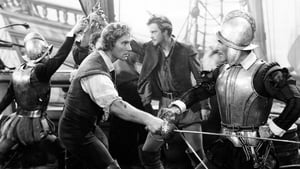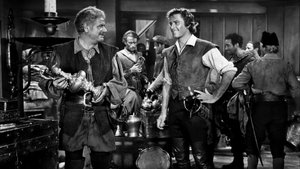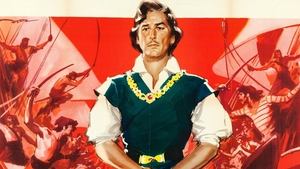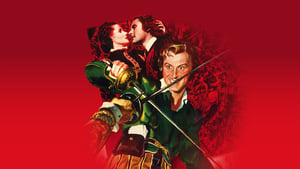Video Sources 0 Views
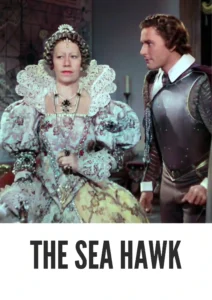
Synopsis
High Seas Adventure: Watch The Sea Hawk (1940) in Vivid Color

Embark on a thrilling voyage with The Sea Hawk, a classic swashbuckler from 1940, now beautifully colorized for an enhanced cinematic experience. Starring Errol Flynn as Captain Geoffrey Thorpe, this film delivers action, adventure, and romance on the high seas. Inspired by Rafael Sabatini’s novel, The Sea Hawk is a captivating tale of courage and intrigue. Perfect for fans of classic adventure films, this HD download brings the golden age of Hollywood to your screen. Note that the movie bears no resemblance to Sabatini’s novel other than the title.
The Sea Hawk Storyline: Adventure on the High Seas
The Sea Hawk tells the story of Captain Geoffrey Thorpe, a daring English privateer who defends England against the Spanish Armada during the reign of Queen Elizabeth I. Thorpe and his crew engage in daring raids on Spanish ships, seizing their treasure and disrupting Spain’s plans to invade England.As Thorpe continues his exploits, he captures a Spanish ship carrying Doña Maria, a beautiful Spanish noblewoman. Despite being enemies, Thorpe and Doña Maria find themselves drawn to each other, adding a layer of romance to the adventure.Thorpe’s actions make him a hero in England, but also a target for the Spanish, who plot to capture and execute him. A thrilling tale of loyalty, bravery, and romance unfolds against the backdrop of naval warfare and political intrigue. The Sea Hawk is an epic adventure that captures the spirit of the high seas and the daring exploits of a legendary privateer.
Movie Cast
The film boasts a stellar cast, bringing this historical adventure to life:
- Errol Flynn as Captain Geoffrey Thorpe
- Claude Rains as Don José Alvarez
- Brenda Marshall as Doña Maria Alvarez
- Donald Crisp as Sir John Burleson
- Gilbert Roland as Lopez
Movie Genre
The Sea Hawk falls squarely into the swashbuckler adventure genre, packed with action, romance, and historical drama. Its thrilling sword fights, naval battles, and daring escapades make it a quintessential example of classic adventure cinema.
Historical Context: Golden Age of Hollywood
Released in 1940, The Sea Hawk represents the height of Hollywood’s Golden Age, showcasing elaborate set designs, extravagant costumes, and dynamic action sequences. Directed by Michael Curtiz, the film reflects the political climate of the time, with its themes of courage, freedom, and resistance against tyranny. The Sea Hawk remains a beloved classic, celebrated for its grand scale and timeless appeal.
Colorization Details
This colorized version of The Sea Hawk has been meticulously restored using modern digital techniques, enhancing the visual experience while preserving the film’s original atmosphere. The colorization process involved carefully analyzing the grayscale tones of the original black and white footage and assigning appropriate colors to each scene. This painstaking process brings new life to the characters and settings, making the story even more engaging for modern audiences.
Technical Details
- Director: Michael Curtiz
- Screenplay: Howard Koch, Seton I. Miller
- Story by: Rafael Sabatini (uncredited)
- Cinematography: Sol Polito
- Edited by: George Amy
- Production Company: Warner Bros. Pictures
- Distributed by: Warner Bros. Pictures
- Runtime: 127 minutes
Technical Specifications
- Download Format: MP4
- Resolution: HD (1080p)
- Compatibility: Compatible with most devices, including smartphones, tablets, computers, and smart TVs.
Reviews and Critical Reception
The Sea Hawk (1940) is widely regarded as one of the greatest swashbucklers in cinematic history, celebrated for its thrilling action sequences, memorable performances, and grand scale. Its themes of courage, freedom, and romance continue to resonate with audiences today, making it a timeless classic. As a quintessential example of Hollywood’s Golden Age, The Sea Hawk remains a beloved and influential film.
FAQs
- Q: What is The Sea Hawk about?
- A: The Sea Hawk is a swashbuckling adventure about an English privateer who defends England against the Spanish Armada.
- Q: Is The Sea Hawk (1940) a well-known classic film?
- A: Yes, The Sea Hawk is a highly regarded classic, celebrated for its action, adventure, and memorable performances.
- Q: Is this version of The Sea Hawk colorized?
- A: Yes, this version has been professionally colorized to enhance the viewing experience.
- Q: What makes The Sea Hawk a great film for adventure fans?
- A: The Sea Hawk offers thrilling sword fights, naval battles, and a captivating story of courage and romance.
- Q: What is the download format?
- A: The download format is MP4, which is compatible with most devices.
- Q: What resolution is the download?
- A: The resolution is HD (1080p), providing a high-quality viewing experience.
Download Now in HD!
Watch The Sea Hawk Today!
